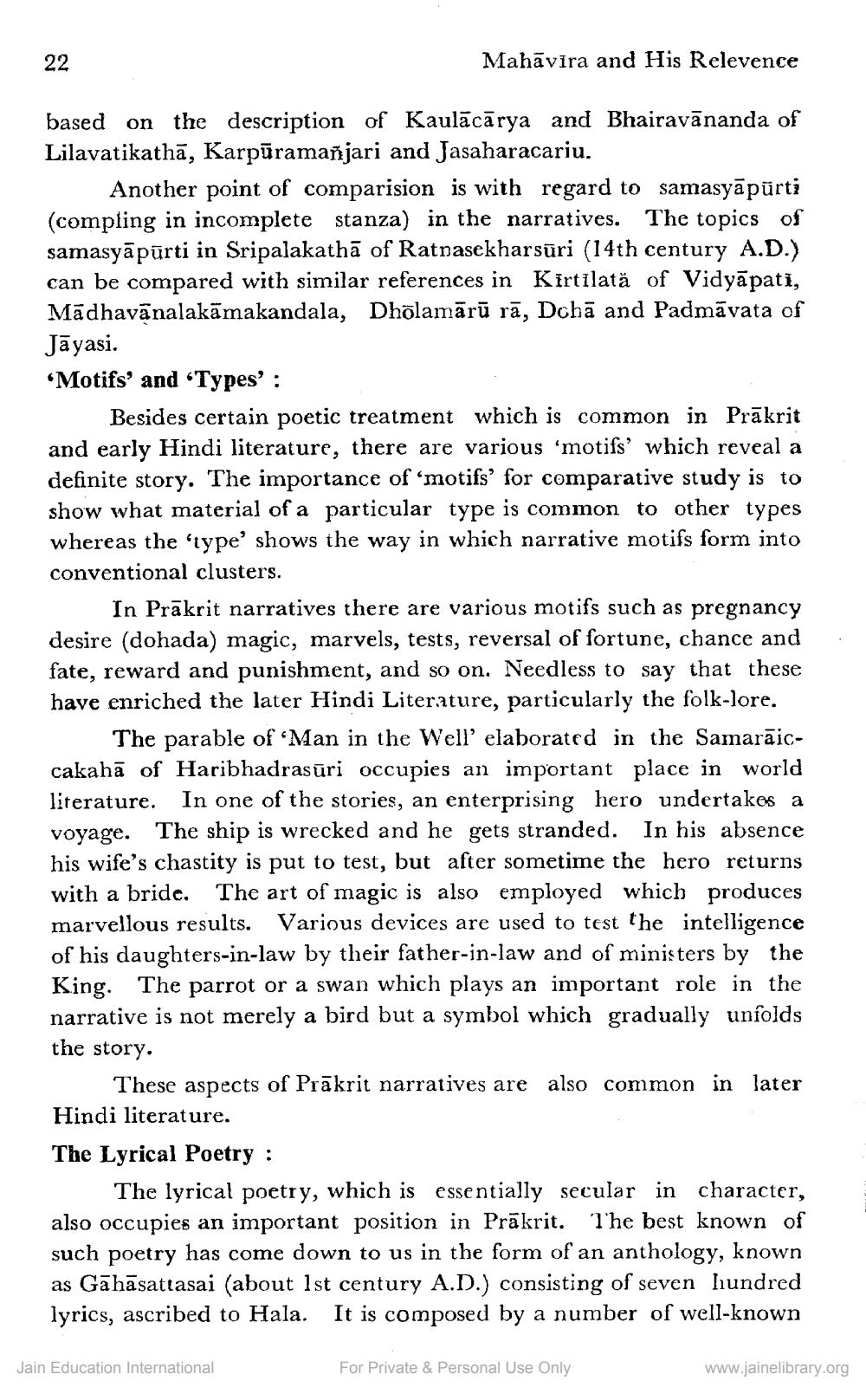________________
22
Mahāvīra and His Relevence
based on the description of Kaulācārya and Bhairavānanda of Lilavatikathā, Karpūramañjari and Jasaharacariu.
Another point of comparision is with regard to samasyāpārti (compling in incomplete stanza) in the narratives. The topics of samasyāpārti in Sripalakathā of Ratnasekharsūri (14th century A.D.) can be compared with similar references in Kirtilată of Vidyāpati, Mādhavānalakāmakandala, Dhõlamārū rā, Dchā and Padmāvata of Jāyasi. *Motifs' and `Types':
Besides certain poetic treatment which is common in Prākrit and early Hindi literature, there are various ‘motifs' which reveal a definite story. The importance of ‘motifs' for comparative study is to show what material of a particular type is common to other types whereas the 'type' shows the way in which narrative motifs form into conventional clusters.
In Prākrit narratives there are various motifs such as pregnancy desire (dohada) magic, marvels, tests, reversal of fortune, chance and fate, reward and punishment, and so on. Needless to say that these have enriched the later Hindi Literature, particularly the folk-lore.
The parable of Man in the Well'elaborated in the Samarāiccakahā of Haribhadrasūri occupies an important place in world literature. In one of the stories, an enterprising hero undertakes a voyage. The ship is wrecked and he gets stranded. In his absence his wife's chastity is put to test, but after sometime the hero returns with a bride. The art of magic is also employed which produces marvellous results. Various devices are used to test the intelligence of his daughters-in-law by their father-in-law and of ministers by the King. The parrot or a swan which plays an important role in the narrative is not merely a bird but a symbol which gradually unfolds the story.
These aspects of Prākrit narratives are also common in later Hindi literature. The Lyrical Poetry :
The lyrical poetry, which is essentially secular in character, also occupies an important position in Prākrit. The best known of such poetry has come down to us in the form of an anthology, known as Gāhāsattasai (about 1st century A.D.) consisting of seven hundred lyrics, ascribed to Hala. It is composed by a number of well-known
Jain Education International
For Private & Personal Use Only
www.jainelibrary.org




